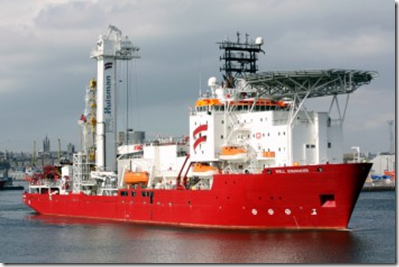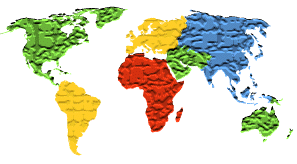Well Intervention
Rapid technological and market developments in the offshore industry over the past five years have put pressure on class to develop rules and notations for a new generation of specialised well-intervention offshore vessels
Driven by insatiable global demand for energy, subsea exploration and well construction has experienced a boom in the past decade. According to consultants Infield Systems and Douglas Westwood, the total number of subsea wells will balloon to more than 5,500 by the end of 2010. While some projects may be delayed in some areas due to financing issues related to the global financial downturn, the rapid construction of new wells is likely to continue, if not accelerate, in the years to come.
This remarkable growth has created challenges for energy companies and suppliers alike. Increased demand for energy has forced many energy companies to re-evaluate stranded or marginal fields, work in deeper waters, use more complex tie-back solutions and improve recovery rates for aging wells, which are about 10-20 per cent less than platform wells.
These emerging demands have pushed operators of well intervention units to develop new technologies to improve access to subsea wells, creating a demand for more efficient subsea well intervention systems, including Riserless Light Well intervention (RLWI) units. While not appropriate for deep water, RLWI units are optimal for repair, scale removal, installation and manipulation of some equipment (such as valves, plugs, screens etc.), re-perforations, zone isolation, fluid sampling, PLT, chemical treatment and well abandonment, among other services.
In the past, this work was performed by mammoth, slow-moving semisubmersible drilling rigs, but developments in dynamic positioning systems, ROVs and onboard systems on smaller, mono-hulled vessels which can move quickly from one well to the next, helping to reduce chartering costs and improving well recovery rates by up to 50 percent. Riser well intervention units are still preferred for some kinds of work and in depths below 500 meters, but new composites now being developed for wire lines may soon allow RLWI units to work in deeper waters.
A vessel or an offshore unit?
The first monohull well intervention unit (Seawell) was built in 1986 by WellOps. The concept proved a success, and over the next ten years, demand for LWI units grew. However, because these units are often similar in design to Offshore Supply, Support or Multi Purpose vessels, there was uncertainty on how to class them: Are they vessels or mobile offshore units?
Based on its extensive experience in the North Sea offshore industry (home to about 40 per cent of the world’s subsea wells) and other regions, DNV moved quickly to manage these issues. According to Per Jahre Nilsen, DNV’s Business Development Manager (Well Intervention) the development project, which began in 2007, created some unique challenges.
“At the time, there wasn’t a lot of useful data out there to help us develop the right approach,” he says. “But based on our experience, technical research and feedback from the industry, we concluded that if the unit is capable of taking control of subsea equipment, such as opening or closing valves on a producing well, it would be classed as offshore, not maritime.”
Nilsen says that these criteria are consistent with the way many national authorities differentiate between offshore operation and maritime ships/vessels operation and notes that Mobile Offshore Development Units (MODUs) code compliance applies to offshore. Once developed, the new rules were then submitted to external hearings for review and comments were solicited from owners and operators.
Unique offering
At present, DNV is the only class society offering the Well Intervention Unit class notation. And based on experience gained by developing the new rules, DNV released a new, optional notation known as WELL Intervention in October, 2009.
Nilsen says that defining the parameters for a mandatory class notation for well intervention units required an exhaustive review of different technical elements and a broad range of safety principles, which covered ventilation, areas classification, shut down & gas detection, escape, evacuation and communication. The organisation sourced in-house expertise on structural design, which took into account substructure and foundations for well intervention equipment and drill floors when applicable. Other issues included fire protection, dynamic positioning, and a number of supplementary requirements, ranging from gas treatment in the event of a leakage to rescue ladders in the moon pool.
Nilsen explains that the scope the WELL class notation include design verification of the well intervention equipment and systems and survey and follow up during fabrication. Once completed or certified, the equipment will follow traditional classification principles and be inspected on a regular basis.
“By introducing the new voluntary WELL class notation together with the revised and mandatory Well Intervention Unit notation, DNV was able to offer owners and operators of well intervention units the same options that owners of drilling units have had in the past,” says Nilsen. “We believe the WELL class notation will gain recognition as a mark of quality — an assurance to charterers that the vessel follows internationally recognized standards for well intervention equipment.”
Today, DNV has issued certification for six well intervention vessels, including four optional WELL notations for a number of subsea services companies. While the commercial benefits for owners sailing with the optional WELL notation is difficult to measure, some well intervention unit operators are hopeful the notation will not only ensure the safe operation of their vessels, but help their bottom line.
Early adopter
One early adopter of the new DNV rules was Aker Oilfield Services. Established in 2006 to meet the rapidly growing global demand for services to subsea fields, the company offers fully integrated services ranging from subsea installation and completion to advanced well intervention operations provided by the company’s state-of-the-art monohull well intervention units. The company’s ambitious newbuilding programme will allow Aker Oilfield Services will provide subsea intervention, light drilling, and riser and riserless well intervention services.
Alf Kristensen project manager for Aker Oilfield Services, says that the company has two well intervention units classed by DNV – the newbuild Skandi Aker, and its sister vessel, Skandi Santos, now under charter with Petrobras in Brazil. “While there are many components to winning a contract, we felt the DNV notations gave us an advantage over competing oilfield services companies,” says Kristensen. “The DNV notation helped strengthen the charterer’s confidence in our offering and is consistent with our focus on reliability and advanced technology.”
While the Skandi Santos and Skandi Aker are well intervention units and will work without risers, Kristensen says DNV worked to modify the optional WELL notation to fit their needs. “We recognize increased demand for well intervention in deeper water where there is a need for using risers and with riser units we can offer coiled tubing services,” says Kristensen. “If we see the notation has a positive operational or commercial impact, we will consider working with DNV on other units in our newbuilding programme.”
Looking ahead, rising demand for subsea oilfield services places DNV in a unique position among class societies in this growing industry segment. “We feel the optional WELL notation has intrinsic value and believe owners will recognize the commercial potential in time — not just for newbuildings, but for existing tonnage.”
Date: 2010-05-28
Well Intervention Systems
Well intervention and workover operations are executed for maintenance purposes to keep production levels up. These operations are also performed to obtain reservoir information and, sometimes, to change out entire X-mas trees.
Well intervention operations represent a large portion of the total field life time costs. Therefore reducing these costs will significantly increase the field economics. Until now, most of the intervention work has been performed by large, expensive drill ships and semi-submersibles. By performing well interventions from specially dedicated vessels, the workover costs can be reduced significantly and the drilling rigs can focus on drilling activities again. With the fast rising number of subsea wells and the promising results with recent well interventions, oil companies are starting to see the benefits of a purpose built well intervention solution.
Huisman has already made its first steps on the well intervention market with the installation of a MPT on the Q4000 in 2001 and more recently with the Well Intervention System for Helix Energy Services’ Well Enhancer and the ‘Moonpool Deployment System’ for Otto Candies.
Currently, Huisman is developing new and more advanced systems that will allow operators to perform more complicated well interventions in water depths up to 10,000ft.
The Well Intervention System can be fitted on a mono-hull vessel or on a small semi-submersible unit. The system supports both open water and high pressure riser operations including handling of all subsea equipment involved in the process.
Related articles
- Norway: Subsea 7 Charters Island Intervention Vessel (mb50.wordpress.com)
- UK: Reef Subsea Enters Charter Deal for Two Neptune Offshore’s Vessels (mb50.wordpress.com)
- USA: Cal Dive Secures Well Intervention Contract for Uncle John Vessel (mb50.wordpress.com)
- UK: Talisman Selects Helix Well Ops for Subsea Works on Its Assets (mb50.wordpress.com)
- Well Enhancer en route to Africa for region’s first LWI project (mb50.wordpress.com)



 Continents of the World
Continents of the World
Leave a comment
Comments 0